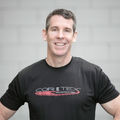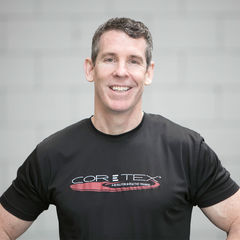“Stillness” is the enemy of biology. Our bodies were designed for movement, not prolonged, uninterrupted sitting. Yet, one of the primary solutions to the problem of people spending so much time being sedentary has been to make the sitting experience as artificial as possible, enabling longer and longer sitting durations. High-tech chairs costing thousands of dollars are designed to support the body with limited to no movement. This hyper-constructed environment promotes “stillness” in every joint, with the only movement occurring in the fingers and eyes. In this environment, the body is artificially propped up and stagnant, without the stimulation of the major muscles and soft tissues of the body.
One of the greatest musculoskeletal risks to the body from prolonged sitting is low-back pain (LBP), which, when associated with sitting, can be acute and/or chronic. According to one systematic review, prolonged sitting time and prolonged driving time were associated with LBP in adults. Among children, prolonged TV watching and mobile/computer use or console playing time were associated with LBP.
As a health coach or exercise professional, you know and appreciate that our bodies were designed for movement. Our bodies thrive on circulation and the delivery of oxygenated blood during muscle activation. When a person adheres to the outdated imagery of “perfect sitting posture,” they remain immobile, without the mechanical stimulation that aids in the function of their digestive, elimination and lymphatic systems. With everything still, the postural adjustments that dissipate the stresses imposed on the spine no longer occur due to the absence of the mechanical pull of the muscles and the forces they resist, such as gravity.
Activity of all types and levels of difficulty have one thing in common—variability, which has been shown to be beneficial to biological systems. Variability, whether it's eating a variety of foods or achieving high and low heart rates via physical activity and recovery, respectively, gives the body opportunity to prepare, unload, progress and thrive.
Variability exists along a continuum from subtle to extreme. With movement, variability encompasses the physiological, neurological, myofascial and skeletal systems. Something as familiar as walking has variability of these systems with every step. Sports such as basketball or martial arts have incredibly high levels of variability demands. Stillness, on the other hand, has no movement and therefore no variability.
Of course, sitting is never going away, nor should it. Humans were sitting long before chairs were available and sitting serves the purpose of rest and recovery. The challenge in modern society lies in the ratio of sitting to moving. Standing desks or workstations offer some advantages to sitting, but they also present certain challenges for some people regarding continual engagement of the postural muscles with minimal variability.
One strategy to combat the many risks of prolonged sitting is to apply the concept of non-exercise activity thermogenesis (NEAT) to sitting. NEAT is an important component of energy expenditure and represents such common daily activities as fidgeting, walking and standing. Although discussions regarding NEAT were originally focused on the cumulative metabolic advantages of small movements, the musculoskeletal benefits may actually be more immediate.
Metabolically, unstructured micromovements such as fidgeting or a bouncy foot some people get while sitting, all have a small metabolic cost. Over the course of a day, those micromovements accumulate and can contribute to improved metabolic health.
The Benefits of Micromovements while Sitting
Consider the results of micromovements and ongoing movement variability in the sitting environment. Any changes in your relationship to the sitting surface will result in a variance of muscle activity to stabilize your posture. Joints and soft-tissue structures are now relieved of the static pressures associated with the previous posture, which improves circulation and tissue hydration.
While sitting, micromovements can consist of weight shifts and fidgeting. Ideally, these micromovements require little to no cognitive load that would distract one from the task in front of them. Interestingly, a study looking at call center workers who sat for eight hours per shift found that those with chronic LBP moved less than their counterparts with no pain. This would equate to less variability to the tissues and structures of the lower back.
Standing desks and sitting on exercise balls have the potential to introduce some variability to the computer work environment that is most often associated with sitting. One limitation with both the ball and standing is the continued static activity of the spinal extensors, due in part to their anti-gravity and postural roles.
A potential solution to introducing variability through micromovements without the need for planning or distraction, is to sit on a variable and responsive surface, such as the Core-Tex Sit, that also allows the user to rest or disengage the spinal extensors intermittently.
One of the ways health coaches and exercise professionals seek to keep their clients progressing is to have them moving toward their goals outside of their sessions. Many clients may more successfully sustain lifestyle changes when barriers to change are lowered. By adding micromovements throughout the day, your clients can experience cumulative benefits as opposed to cumulative musculoskeletal stress.
If you are an ACE Certified Professional, visit ACE Pro Compass for more information about the Core-Tex Sit and to receive a 15% discount on this and other products from Core-Tex.
To learn more about exercise to counter the effects of prolonged sitting and support low-back health, check out the following articles:
Finally, if you are a health coach or exercise professional, consider these continuing education options:
-
Pain-Free Movement Specialist Program, from author Anthony Carey (worth 1.2 ACE CECs)
-
Postural Problems of Prolonged Sitting and Corrective Exercises (worth 0.2 ACE CECs)
 by
by 









 by
by